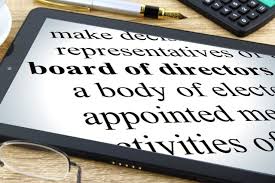Ten Essential Steps to Take Now to Advance Corporate Board Governance (IV of IV)

Corporate board members face increasing risks. Federal prosecutors are watching their behavior when corporate malfeasance occurs. Regulators focus on the important issue of board governance. Shareholders are ready to file derivative suits at the drop of a hat when corporate misconduct occurs.
An effective corporate board can bring about significant results – improved financial performance, effective ethics and compliance, a positive corporate culture and a chance to achieve sustainable corporate growth.
My laundry list of corporate board deficiencies and misfires is lengthy. On the more positive side, and in advance of a crisis situation, companies should examine these ten important steps that can be taken NOW to advance corporate governance.
Here are my Top 10 of Essential Steps:

One: Train the Board Members on Oversight Responsibilities: Most board members do not really know how to conduct oversight and monitoring of board activities. I am not saying they are lazy. Board members need to be trained on how to execute their roles and responsibilities. Just because a board member was a financial wizard in a past career does not mean the board member knows how to execute as a board member. CCOs should be involved in this training mission and such training should cover the full range of issues and strategic decisions.
Two: Expand Voices from Senior Management: Board members regularly hear from the CEO and CFO. Board members need to hear from more senior managers and even lower level managers, depending on the subject. CEOs and CFOs together may filter information and restrict access to a more comprehensive range of information.
Three: Increase Diversity on the Board: Corporate boards are moving too slow when it comes to promote ethnic and gender diversity. In the absence of real dedication to this mission, corporate boards are often disconnected from important viewpoints and diverse perspectives. Decision-making suffers from a lack of insights, new ideas and challenges to “old ways” of thinking.

Four: Add New Professional Skillsets to Board: corporate boards are filled with prior executives and financial professionals. What a limited pool from which to hear? What is needed is expansion of board members to expertise in other areas, including ethics and compliance, human resources, information technology, talent development, international business experience, sales, and other areas that may be relevant to a specific business.
Five: Recruit New Board Members from Outside the “Usual Suspects”: Corporate boards suffer from a recruitment pool that is usually limited to “who do you know”? Word of mouth usually restricts consideration for candidates outside the usual pool of possibilities. Replacing a board member creates an opportunity to advance diversity and include new professionals outside the typical biography.
Six: Increase Focus and Understanding on Risk Management: Corporate boards often do not have much expertise on risk management. As companies face a growing number of risks, companies have to devote more time to identifying risks, mitigating such risks and monitoring risk performance. Corporate boards often wish to focus only on financial results and basic business strategies. Risk management has to include enterprise risks, legal and compliance risks and mitigation strategies and planning.

Seven: Improve Information and Data Presented to the Board: I often hear complaints from board members that they receive too much information. That is unfortunate and reveals either that board members expectations for their responsibilities are inaccurate or that the information they are receiving is not relevant to their responsibilities. This is an important issue and information has to be tied directly to board responsibilities, oversight functions and training so that the board receives the information they need to carry out their duties.
Eight: Term-Limits on Board Members: The average age of a board member is over 70 years old. That is too old (despite the fact that I am 62, I can say that for a few more years). Term limits is a way to ensure corporate board members are vigorous and committed to their role. I often hear about the desire of a board chairman to “replace” some of the older, longer serving members who may be less dedicated to the board mission. A term-limit requirement gives the board chairman a way to replace board members as needed to reinvigorate the board’s performance.

Nine: Increase the Number of Board Committees: Board productivity can be increased by delegating issues to committees. Most boards have a compensation, nomination and audit committees. To leverage existing resources, boards should create a separate ethics and compliance committee and a separate risk committee. For regulated food or energy companies, it would be advisable to create a specific safety committee. The additional committees can cover more specific issues and then bring important issues to the full board’s attention.
Ten: Annual Self-Evaluations: Corporate boards are usually weak in conducting productive self-evaluations. If appropriate, the board may want to conduct board evaluations every three years and maintain a self-evaluation procedure each year. The Chair of the Board has to devote time to this process, design appropriate measures and solicit robust self-evaluation on strengths and weaknesses of board performance. Annual evaluations should include diversity, skills, competencies, motivations, dedication and board dynamics and collaboration.















